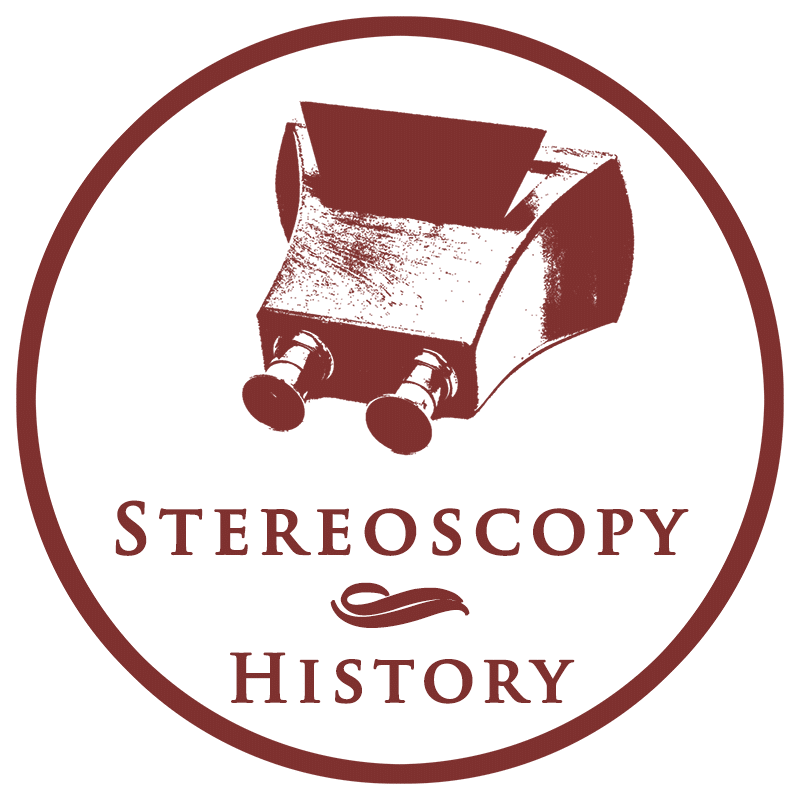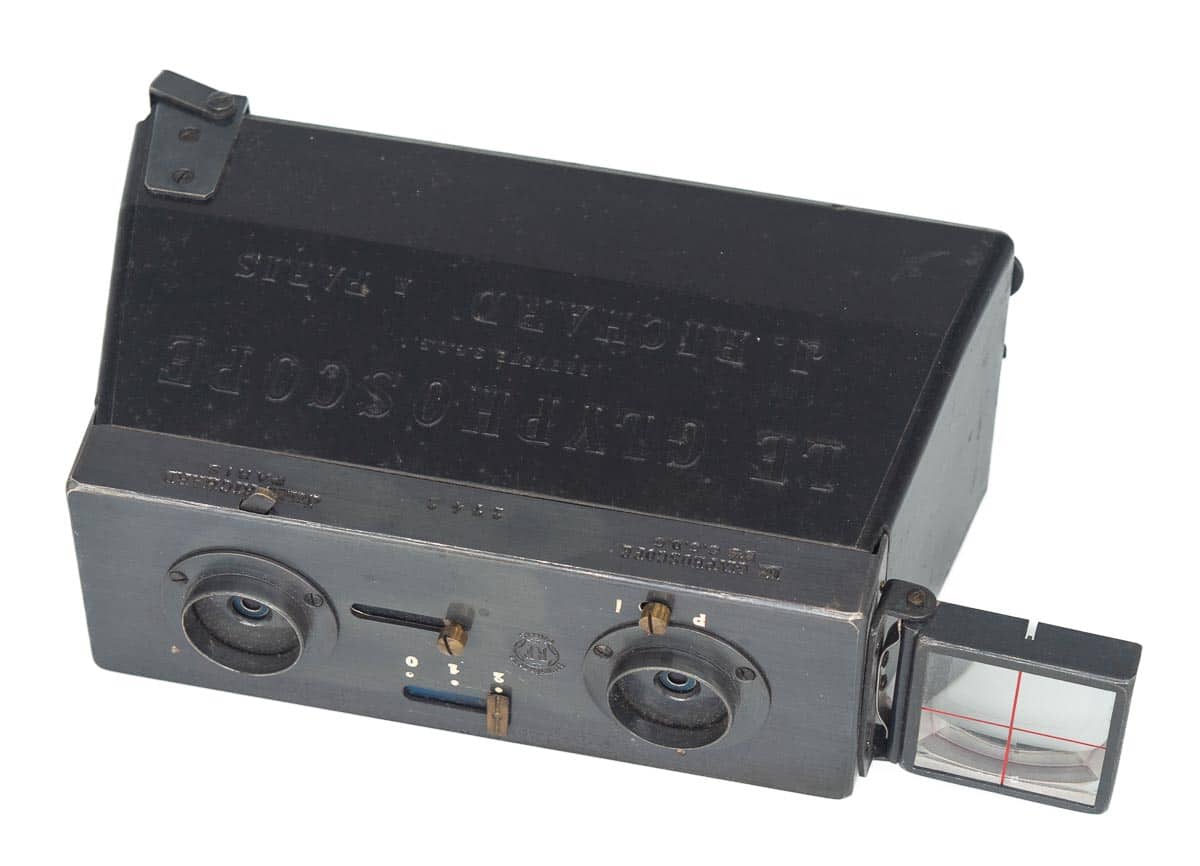
The Glyphoscope Modèle 1 is a compact and simple stereo camera that can also serve as a stereoscope. The camera was an affordable alternative to Richard’s more expensive Vérascope, and made stereo photography accessible to amateurs. The marketing slogan was: Designed especially for beginners in photography. The Glyphoscope was manufactured from 1904 to 19331, without changing significantly in design. Initially, three models were introduced from 1904 and 19052. They offered the same functionality but differed by shape, used materials and weight. Model 1 and Model 2 where made of metal and weighed 430 and 345 grams. Model 3 was made of wood and weighed 320 grams3. More models were introduced later4:
- Model 4 was introduced in 1908 and supported roll film.
- Model 5 was introduced in 1927 and supported 6 x 13 cm glass plate negatives.
- Model 6 was introduced in 1930 and was similar to the previous models but added more shutter speeds.
To turn the camera into a stereoscope, the front panel with the shutter needs to be removed. A slide holder for stereoviews, fitted with an opaque glass, replaces the standard plate holder at the back. The Glyphoscope as stereo viewer works quite well, but it doesn’t offer the same ease of use and viewing experience as a dedicated hand-held stereoscope.
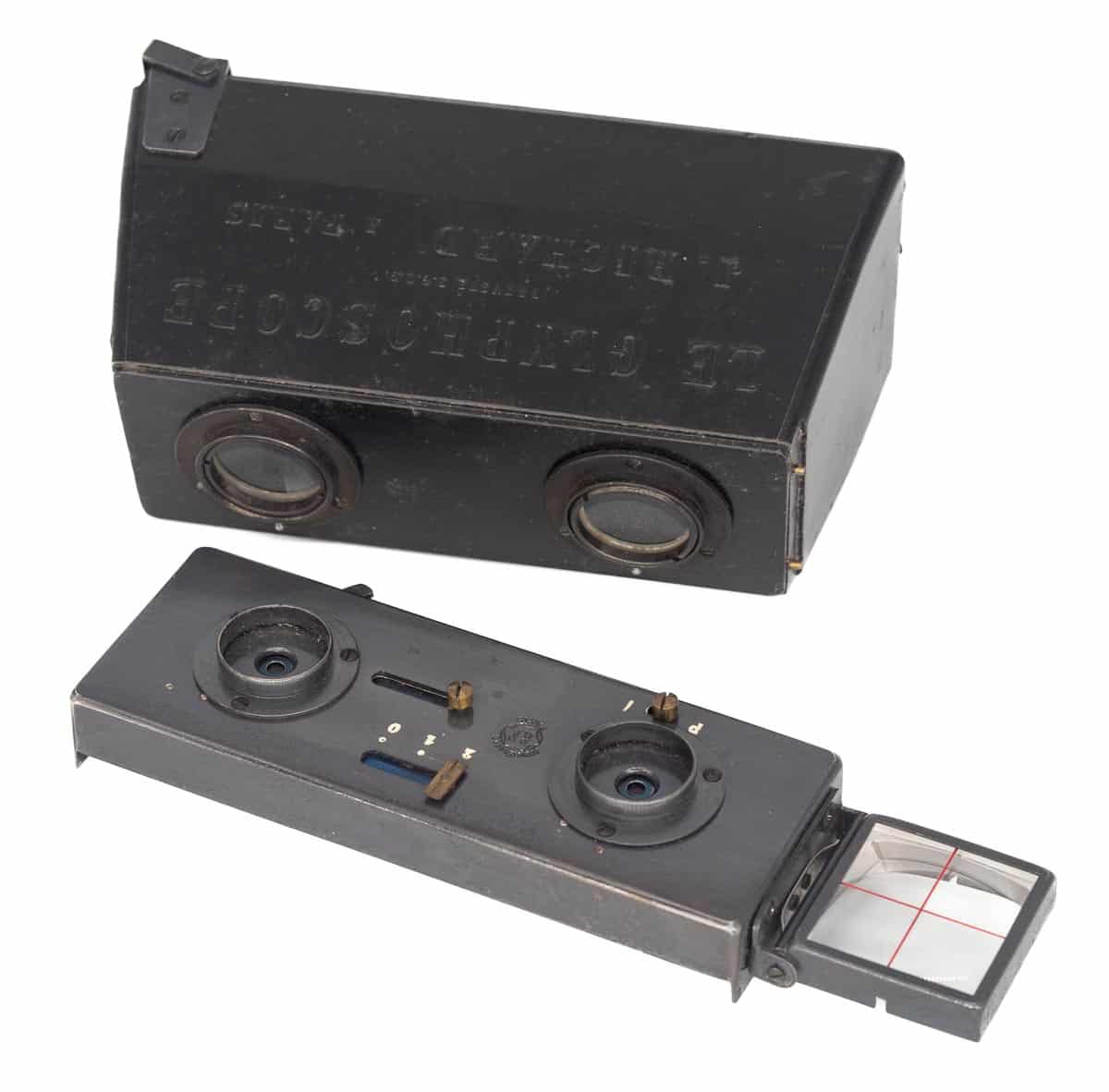
The front panel with lenses and shutter is removed.
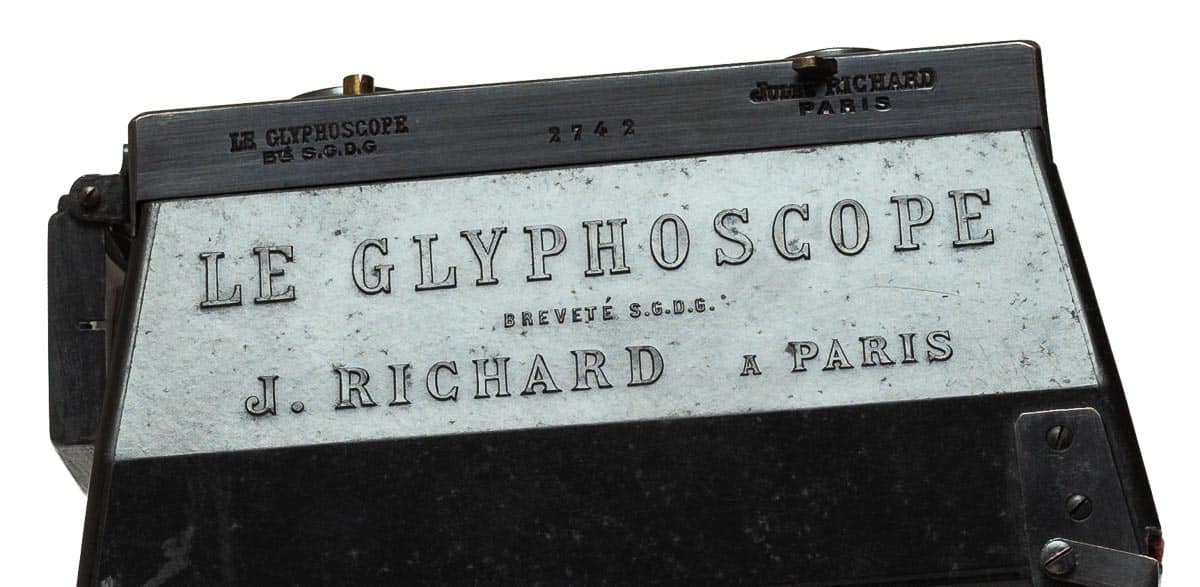
Specifications
| Manufacturer: | Jules Richard |
| Year of introduction: | 1904 |
| Year of manufacture: | c. 1908 |
| Type: | Stereo camera and stereoscope |
| Serial number: | 2742 |
| Negative type: | Glass |
| Negative format: | 45 x 107 mm |
| Lens: | Two 54 mm achromatic lenses |
| Serial number lens: | None |
| Lens aperture: | Three lens apertures |
| Focus: | Fixed focus |
| Shutter: | Guillotine shutter with settings P and I |
| Dimensions (L x W x H): | 13.5 x 8 x 6.5 cm |
| Construction: | Metal |
Patent
| Number: | FR3500825 |
| Title: | Appareil photographique stéréoscopique |
| Filing date: | 25-07-1904 |
| Publishing date: | 13-10-1905 |
| Applicant(s): | Jules Richard |
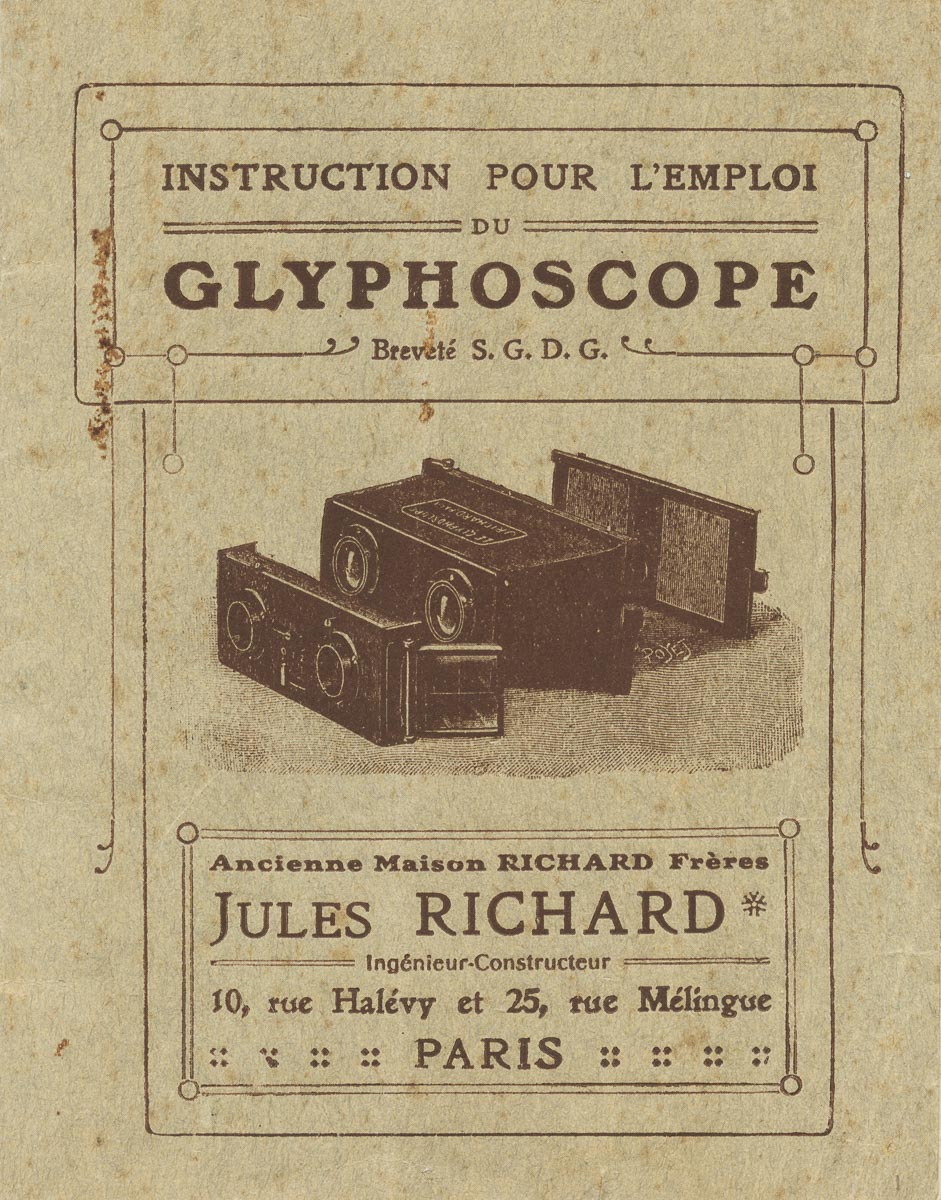
Glossary: achromatic lens / guillotine shutter / negative
Jules Richard
Félix Richard (1809–1876) established in 1845 a company that was specialised in the manufacturing of barometers. Jules Richard (1948–1930) took over the management of his father’s company in 1876, and patented in 1880 the first reliable barometer that could permanently record air pressure. The barometer became very successful, and the company at 25, Rue Mélingue in Paris started to grow. Richard introduced the compact 45 x 107 mm glass stereoview format and Vérascope stereo camera in 1893. It became a great success and the Vérascope became the best-selling stereo camera of its time. A product line was created around the new format, with a wide range of cameras, stereoscopes and accessories in different price ranges. The company became the leading brand of stereoscopy products and brought stereo photography within the range of amateurs. Their product names, such as Vérascope and Taxiphote, were commonly used as synonyms for stereo cameras and stereo viewers of all kinds.
The complete story of Jules Richard
References
- Perin, J. (1993) Jules Richard et la magie du relief – volume 1, pp. 122, 125. ↩︎
- Ibid, p. 122. ↩︎
- Richard, J. Instruction pour l’emploi du Glyphoscope, p. 3. ↩︎
- Perin, J. (1993) Jules Richard et la magie du relief – volume 1, p. 125. ↩︎
- Richard, J. (1905) Appareil photographique stéréoscopique. Via: data.inpi.fr ↩︎
